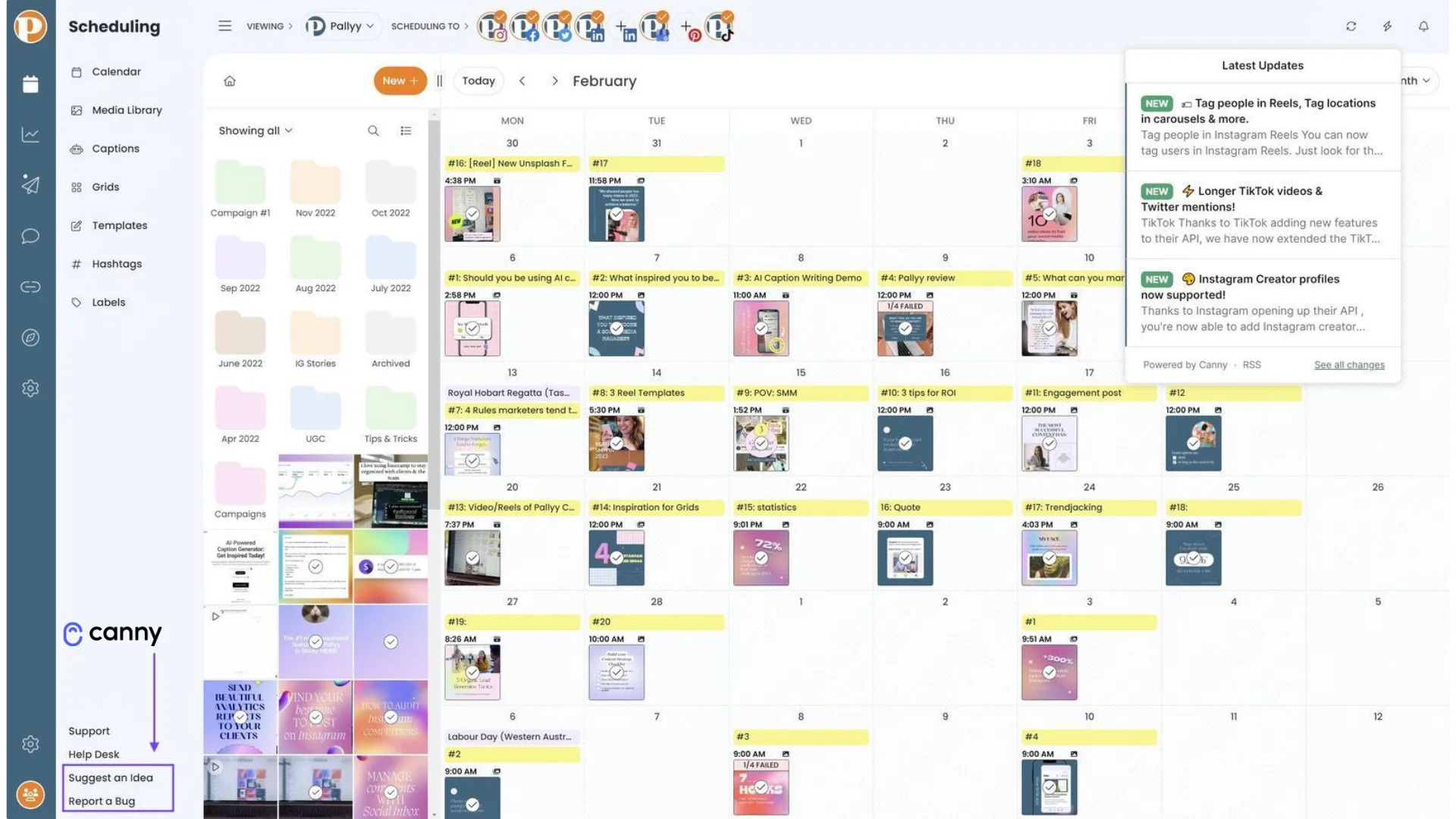
Tim Bennetto is a full-stack developer and the founder at Pallyy. For the last four years, Tim built Pallyy from the ground up. His main goal is to build an affordable feature-rich social media management and scheduling platform.
Since Pallyy’s inception, Tim has been handling every aspect of the business. That includes:
- Building the platform
- Supporting customers
- Handling feature requests
- Promoting on social media
- And much more
With 1.4k paying customers and 60k free users, Pallyy is still a one-person show. It’s easy to put feedback management on the back burner. But that’s the opposite of what Tim did.
Problem
It’s one thing to want to collect feedback. It’s another thing to actually get it.
“The problem I’ve faced as a solo founder is getting feedback from users. In the beginning, I would send emails asking for feedback. However, the response rate was very low. It also took a lot of time that I didn’t have.”
Email outreach can be effective, especially when you’re just starting out. But then you need to combine all the feedback you receive and try to find similarities. You also need to understand what each piece of feedback means and how vital it is for your business.
Also, timing matters. Your users may receive a survey request when they’re happy with the platform. So, feedback will be all positive. Later, they may encounter a problem, but they won’t have a way to share their feedback anymore. As a result, you won’t have an accurate representation of your customer sentiment.
“When growing a SaaS platform, you need to get feedback at the right time. This is where Canny came in handy.”
Startup founders, how do you collect user feedback from your SaaS users? I'm currently using this welcome email for the new sign-ups.The goal is to understand their use case, but I could also ask which feature to add. Good 👍 Bad 👎 ? pic.twitter.com/647l3d8QTb
— Luca Restagno 🐢 userdesk.io (@ikoichi) September 12, 2023
Solution
Tim is dedicated to building the best platform out there. So, listening to his users was a top priority.
Tim started with two separate boards: one for feature requests and the other one for bugs. He added links to those boards inside users’ Pallyy dashboards. Those links are always visible. This way, whenever a user notices a bug or has a suggestion, they can immediately submit their feedback.
“The feedback started coming in on auto-pilot. No more sending cold emails – it was just a stream of incoming tickets. This helped guide Pallyy in the early days and get us to where we are today.”
Once Tim prioritizes this feedback, he adds it to the public roadmap.
The easiest way to get feedback for a SaaS is through a public roadmap. pic.twitter.com/oSbPa49IkD
— Tim Bennetto (@Timb03) July 11, 2023
This way, he’s transparent about what he’s building, and users get to see Pallyy’s journey.
Tim didn’t stop there. He also uses Canny’s changelog to announce updates. Pallyy’s dashboard features a link to its changelog as well. Tim believes that their customers feel like they’re in the loop thanks to the changelog. It also reaffirms their decision to choose Pallyy.

Results
One of the hottest commodities for solopreneurs is time. There’s never enough time to do everything. That’s why Tim values Canny so much.
“It’s saved countless hours of sending emails and guided Pallyy into becoming one of the most popular social media management platforms around today.”
In fact, Tim mentioned that handling so many feature requests would be impossible without Canny.
“Canny has been invaluable. In fact, we’re still using the free plan.”
We’re on a mission to empower startups just like Pallyy. We believe that feedback management can really make a difference. And Tim agrees.
“If you’re starting a SaaS, adding Canny is one of the most cost-effective and high ROI things you can do.”
Are you also building a startup? Simplify your feedback management with Canny! Check out our discounts for startups, or get started with a free plan. Book a demo here.
2
2019
2022
1,942
